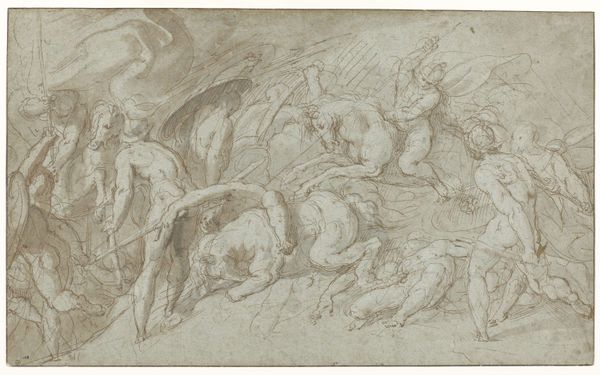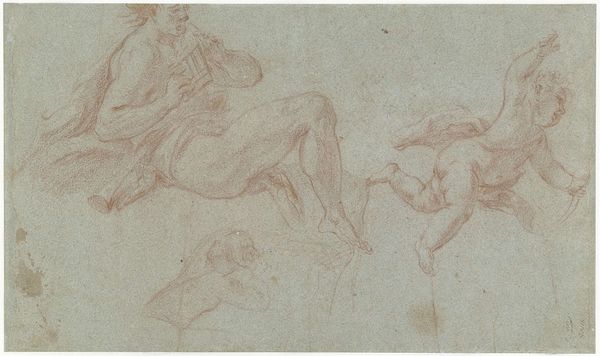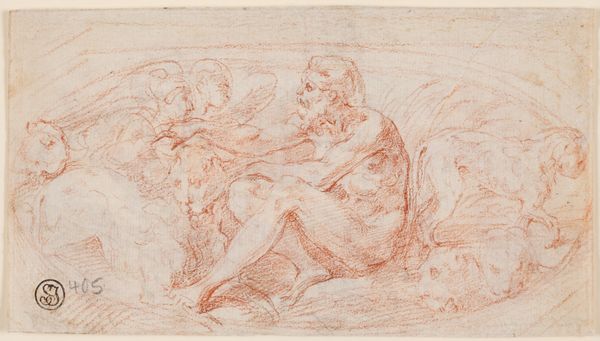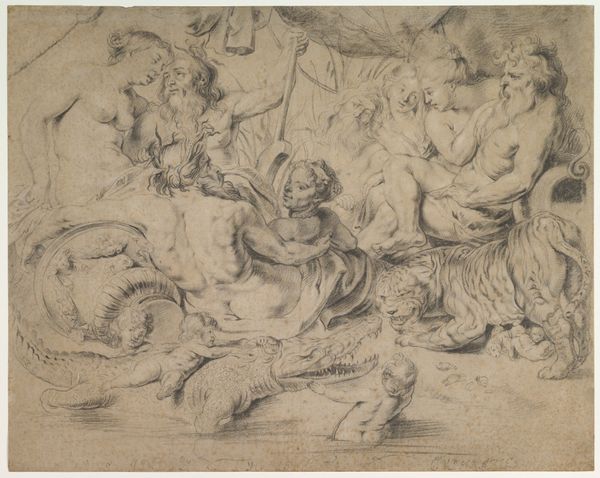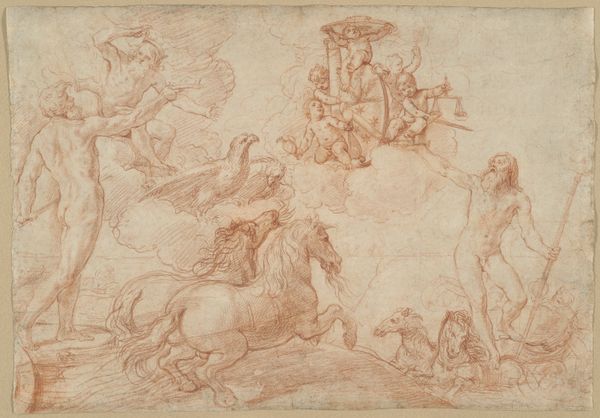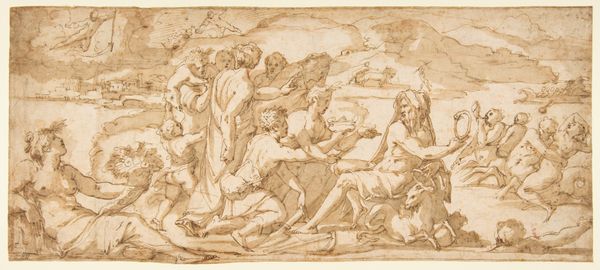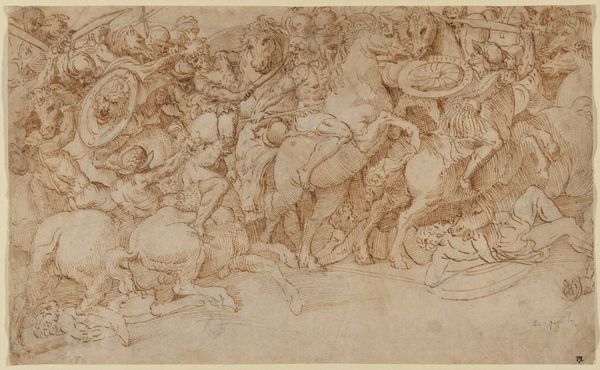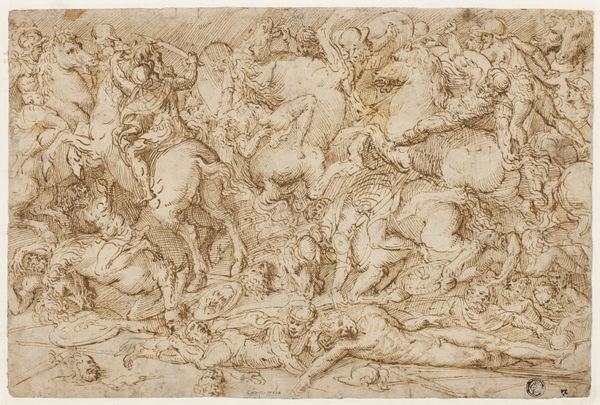
Study of Hands (recto); Study for a Reclining St. Francis (verso) 1623 - 1633
0:00
0:00
drawing, dry-media
#
drawing
#
figuration
#
dry-media
#
italian-renaissance
Dimensions: Sheet: 8 1/8 in. × 11 in. (20.7 × 28 cm)
Copyright: Public Domain
Curator: This drawing, rendered in sanguine chalk, is titled "Study of Hands" with the verso showing studies for "Reclining Saint Francis". It comes to us from Daniele Crespi and dates from 1623 to 1633. I'm immediately struck by how incredibly human these hands are. Editor: It's the inherent vulnerability of them that jumps out for me, especially when taken into account the purpose these hands serve - the drawing anticipates studies for Reclining Saint Francis and his legacy. They simultaneously seem delicate and capable. What could they have built? What have they broken? Curator: Precisely. Hands in art have long been invested with symbolism. Think about the “Hand of God,” an emblem of divine intervention. Here, though, we see the artist grappling with the intricacies of the human form. These aren't idealized, symbolic hands; they're real. Editor: Crespi gives us an honest presentation of hands, a vital method of constructing personhood. It reminds us of the labour and the physicality involved in building legacy. Renaissance artistic ideals about beauty standards contrast Crespi’s rendering of hands in a quasi-realistic, even gritty form. These look like the hands of laborers, not those accustomed to refined culture. Curator: It's fascinating how, even without a face, hands carry such potent emotional weight. It is particularly strong for religious art. Gestures such as prayer or penance use the hands as symbols for piety. What I find striking is how well it exemplifies that continuous thread of artists returning to certain foundational poses or expressions throughout the ages. Editor: Yes, the very texture of the drawing evokes something powerful. The color feels raw, unfinished—as if the labor itself were still in process. It humanizes the entire artistic endeavor, and forces us to think of not only Renaissance artistry, but also laborers who may have been viewed simply as means to an end. I suppose that’s what really moves me. Crespi’s composition gestures at the relationship between spiritual iconography and our human condition. Curator: Indeed, that sense of vulnerability. What starts out as simple figuration unravels into more probing questions about our own fallibility. Editor: It is remarkable to remember Crespi gives such profound thought to our spiritual journey while studying such minute aspects of our bodies. I’ll carry that lesson with me.
Comments
No comments
Be the first to comment and join the conversation on the ultimate creative platform.
